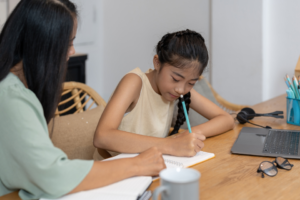
Steps for Fostering a Growth Mindset in the Classroom
When a student faces learning difficulties, it’s easy to think that it’s just a ‘half-empty, half-full glass’ type of situation. Some students see failure as a challenge, while others consider it as a dead-end. But it’s not the teacher’s job to separate good students from bad ones. Our role is to let students form a mindset of scaling any difficulty and moving forward. This is the fundamental principle of growth mindset.
Growth mindset refers to a learner’s willingness to continuously improve. In a study by the Education Week Research Center last 2016, 98% of the 600 teachers interviewed agreed that integrating growth mindset leads to better student learning. With that in mind, here are some steps to make the classroom more conducive for growth.
1. Take note of each student’s mental health
Every student has their own level of mental wellbeing, and it can affect the child’s learning capacity. A study conducted by Shenandoah University tackled access to school therapy and how it impacts academic performance. It shows the significance of psychological wellbeing in scholastic success. This correlation is also why Maryville University identified a proper mindset as an important factor for learning success. For you to be able to foster a growth mindset among your students, you must first create a good atmosphere in the classroom. Teachers should encourage students to seek help when they feel like they need it. This way, they can let go of any baggage that hinders them from growing intellectually.
2. Encourage competition
Carol Dweck, the acclaimed author of Mindset, emphasizes that having a growth mindset is not an innate characteristic. It needs to be developed over time, and this is when healthy competition comes in handy, as it can be a great motivator for students to push themselves. Be clear to them though, as the goal is not to let students compete with one another, but to compete with themselves and go beyond their limits.
It’s also a good way to get them to participate in classroom activities. To learn more on how to do this, check out Ryan Crawley’s tips on increasing student engagement in the classroom.
3. Build your students’ self-confidence
Getting stuck or facing a seemingly insurmountable problem can drain your confidence. Since growth is all about surpassing limits, teachers should constantly support students in terms of sustaining confidence. This can be achieved through familiarity and repetition. Students can become more open and confident when they can ease into a familiar learning environment. Try to maintain a standard teaching pattern and encourage more communication in the classroom. Identify the common insecurities that your pupils struggle with and address their source.
4. Praise the learning process and not just the effort
There are teachers who think that it’s sufficient to praise students for their efforts. But Education Week relays that praising effort alone reduces the learning process into a chore. They also interviewed Dweck and she said that “students need to try new strategies and seek input from others when they’re stuck. They need this repertoire of approaches—not just sheer effort—to learn and improve.” Collaborating and discovering new ways to do things can be satisfying and can be considered a reward in itself. Teachers should praise students when they innovate and think creatively, which reinforces not just effort but the student’s overall learning process.
Written by Margaret Tiller
Margaret Tiller is a high school teacher and freelance writer. She has written papers on special education as well as alternative pedagogy and regularly volunteers in teaching projects abroad.



